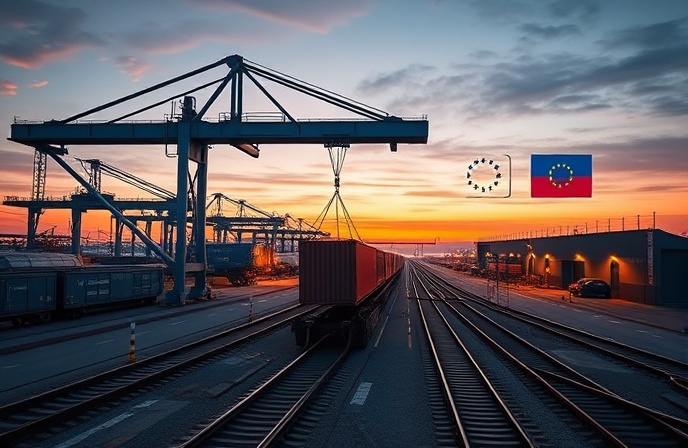Metro-North Accessibility Upgrades: Bronx Rail Infrastructure Improvements
Metro-North upgrades Bronx stations, boosting accessibility & safety on Harlem Line.

Metro-North Embarks on Major Accessibility Upgrades in the Bronx
In a significant move to enhance passenger accessibility and modernize its infrastructure, the Metropolitan Transportation Authority (MTA) announced this week the commencement of extensive station renovation and accessibility upgrades along the Harlem Line in the Bronx, New York. The project, slated to begin this month, will focus on three key stations: Williams Bridge, Woodlawn, and Botanical Garden. This initiative, driven by a commitment to inclusivity and improved service, represents a substantial investment in the future of public transportation in the region. The primary objective is to rebuild and fully modernize the Williams Bridge and Woodlawn stations, installing essential accessibility features while simultaneously improving overall operational efficiency and passenger comfort. This article will delve into the specifics of the project, the technologies employed, and its potential impact on the railway network.
Elevating Accessibility: The Core of the Project
The cornerstone of this project lies in its commitment to accessibility. Both Williams Bridge and Woodlawn stations are slated for complete overhauls with the installation of elevators, ensuring step-free access to all platforms. The plan includes four new elevators in total, two at each station, a significant enhancement for passengers with mobility challenges, as well as families with strollers and travelers with luggage. The MTA’s investment reflects adherence to the Americans with Disabilities Act (ADA) while demonstrating a forward-thinking approach to inclusivity, creating a truly equitable transportation experience for all passengers.
Platform Innovations: Embracing Winter Weather Technology
Beyond accessibility, the project showcases cutting-edge approaches to platform design and winter weather mitigation. Crews will replace both platforms at Williams Bridge and Woodlawn Stations. A key feature of the modernized platforms will be the integration of an internal snow-melting system. This innovative technology utilizes embedded heating elements designed to prevent snow and ice accumulation automatically, reducing the risk of slips and falls, and minimizing disruptions to train schedules due to winter weather. This innovative system is designed to reduce the operational impacts of winter storms.
Infrastructure Reconstruction: Foundation and Stairway Replacements
The upgrades extend beyond cosmetic improvements and passenger convenience, incorporating essential infrastructural enhancements. The project includes the complete replacement of platform foundations and support piers at both Williams Bridge and Woodlawn. Existing stairways on both platforms will also be fully replaced, ensuring safety and structural integrity. Furthermore, the platforms themselves will be extended to accommodate longer trains and improve passenger flow during peak hours. These upgrades are essential for maintaining the structural integrity and longevity of the stations, safeguarding against wear and tear and improving the overall reliability of the railway network.
Concurrent Operations: Project Management and Right-of-Way Considerations
The MTA faces a significant challenge in performing these renovations concurrently across multiple stations. The work will be conducted on the railroad’s right-of-way. The concurrent nature of the project necessitates careful coordination and advanced project management techniques to minimize disruption to train services. These include detailed scheduling, resource allocation, and proactive communication strategies to keep passengers informed and minimize delays. This complex approach is crucial to ensuring the project is completed efficiently, on schedule, and within budget, ultimately delivering upgraded stations with minimal inconvenience to daily commuters.
Conclusion
The MTA’s investment in the Harlem Line stations represents a substantial step forward in modernizing its infrastructure and enhancing passenger experience. The project’s focus on accessibility, innovative snow-melting technology, and infrastructure upgrades underscore the railway’s commitment to providing safe, reliable, and inclusive transportation options for all riders. The successful completion of this project is expected to dramatically improve the overall passenger experience, promote accessibility for individuals with disabilities, and enhance the railway’s resilience against the challenges posed by inclement weather. By incorporating advanced technologies and prioritizing passenger needs, the MTA is positioning itself for continued success in an ever-evolving transportation landscape. The successful implementation of these upgrades could serve as a model for similar projects across other parts of the network, highlighting the importance of continuous investment in railway infrastructure. As the project progresses, the industry will be watching, looking for innovative solutions to the challenges and opportunities presented by a changing climate.






